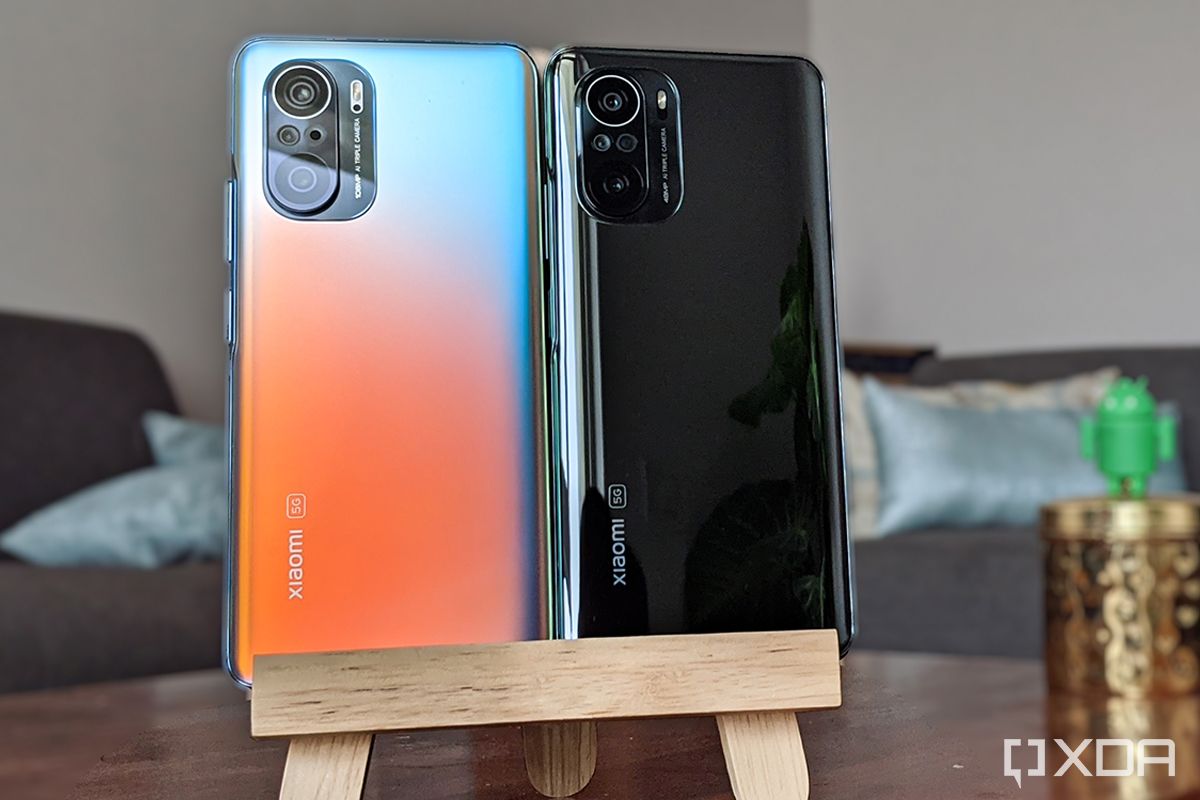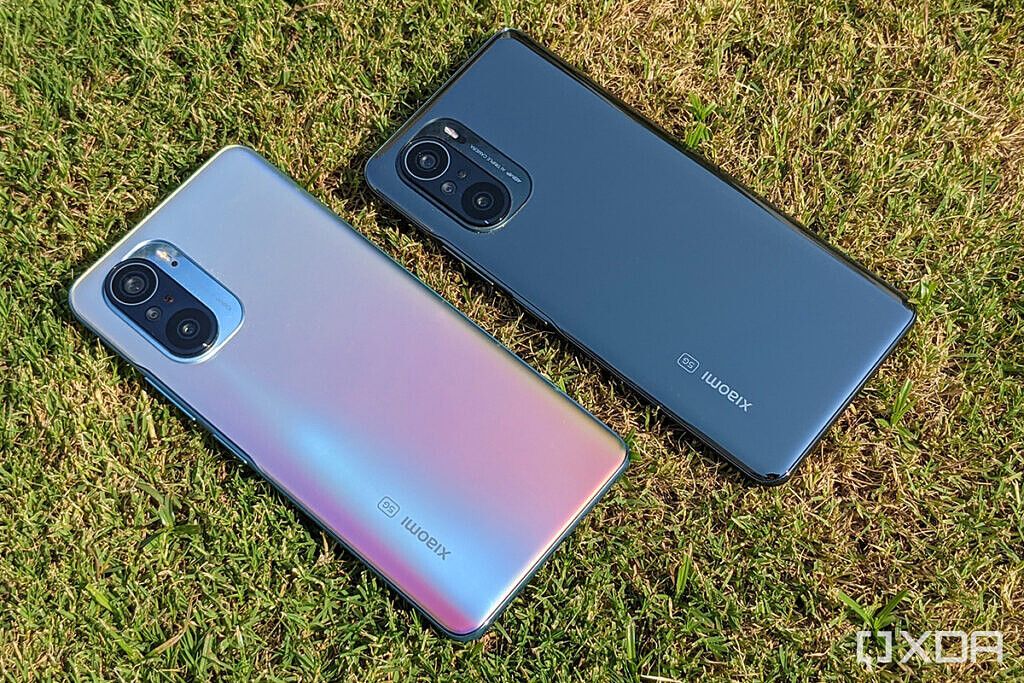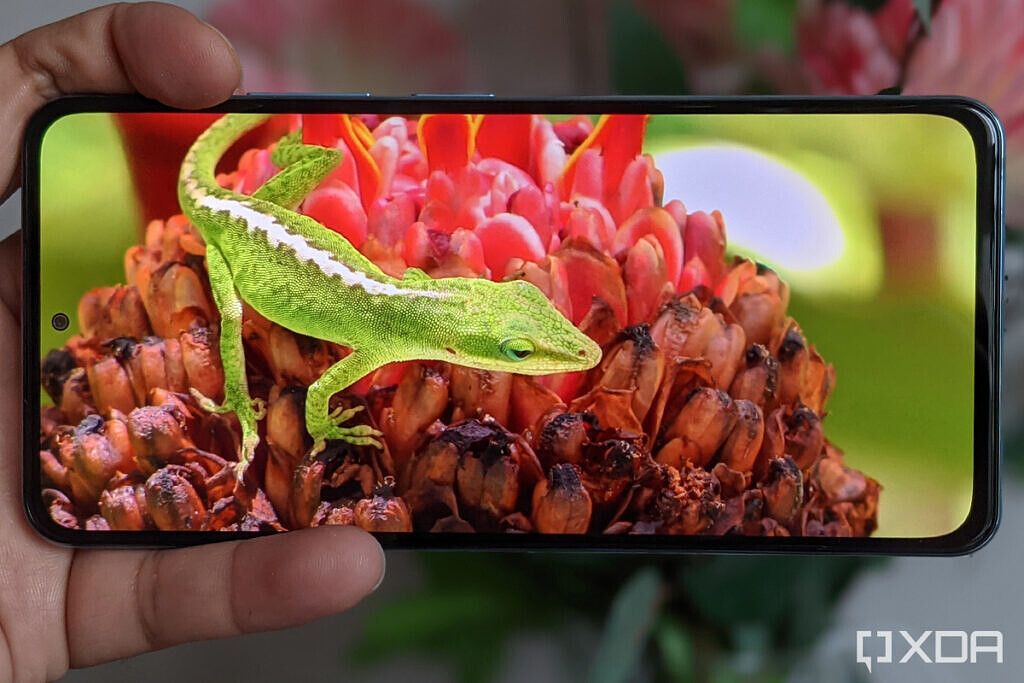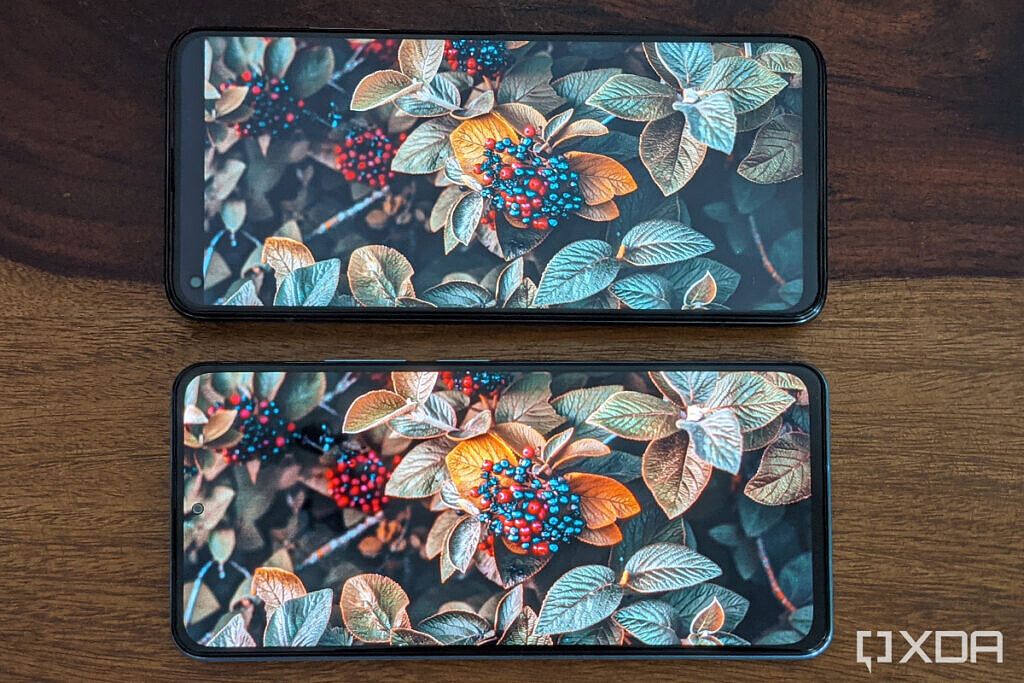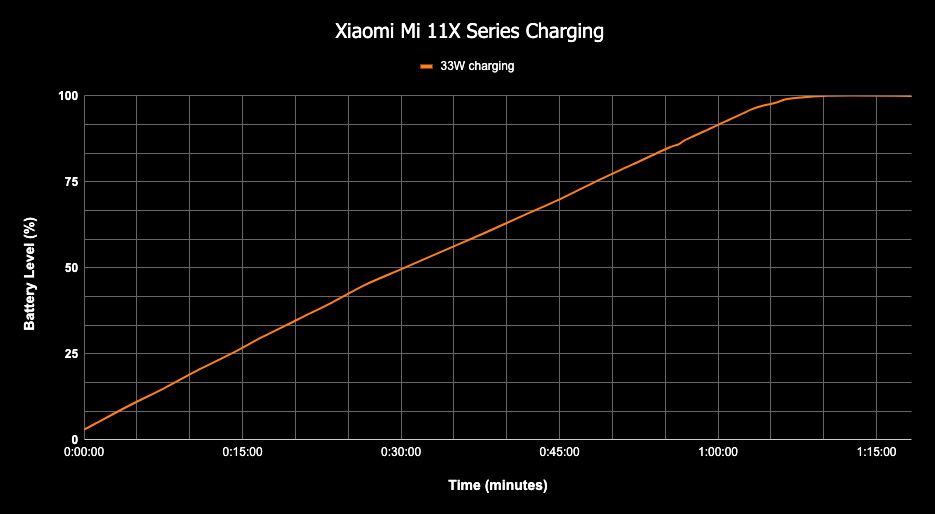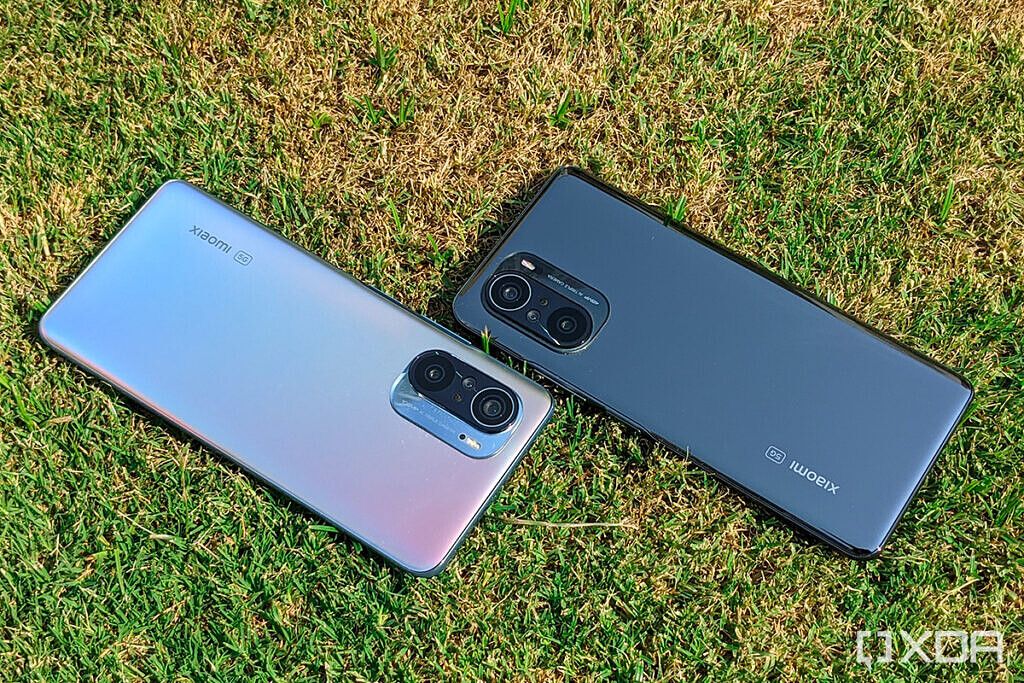Xiaomi recently launched the Mi 11X and the Mi 11X Pro in India. These two flagship killers were initially announced as Redmi K40 and Redmi K40 Pro+ in China and are part of Xiaomi's crusade to conquer India's premium phone market as it has in the lower price segments. The Mi 11X series has the power to dent OnePlus's long-standing dominance in the segment of sub-premium flagships.
Xiaomi is the best-selling smartphone brand in India, and its popularity stems from the value-for-money Redmi lineup. After consciously limiting itself to the entry-level and mid-range segments for several years, Xiaomi entered the premium segment, which begins at ₹30,000 or roughly $400, by launching the Redmi K20 Pro in 2019. In the following year, i.e., in 2020, Xiaomi took a leap of faith in the Indian market and launched its first premium smartphone — the Xiaomi Mi 10 — after a three-year gap since its last premium smartphone — the Mi MIX 2. As I noted in my Mi 10 review, the phone was tasked to transform the brand's image in India. The Mi 10 was followed by the Mi 10T and the Mi 10T, which were optimized for the price expectations of the Indian buyers. While the Mi 11 didn't make it to India, Xiaomi launched the more expensive Mi 11 Ultra in the country. The Mi 11X and the Mi 11X Pro were launched alongside the Mi 11 Ultra and they offer striking features at incredible prices.
The Mi 11X and the Mi 11X Pro are identical to a reasonable extent. The duo shares the same 120Hz AMOLED display, the same design and color options, the same battery and charging capabilities, and the secondary and tertiary cameras. Meanwhile, the differentiating factors between the two phones include the primary cameras and the processor.
So, in this review, we will be taking a look at the Mi 11X series collectively and only point out the differences wherever necessary. Interestingly, the Redmi K40 has also been rebranded as POCO F3 for global markets — excluding India — before being launched as the Mi 11X. You can also check out our POCO F3 hands-on preview to learn more about how that is different from these devices.
Xiaomi Mi 11X and Mi 11X Pro: Specifications
What's in the box?
These are the following items you get inside the box of the Mi 11X series smartphones:
- Handset
- USB Type-A to Type-C cable
- 33W charger brick
- USB Type-C to 3.5mm headphone dongle
- SIM ejector tool
- Silicone case
- Warranty and other paperwork
Design
The Xiaomi Mi 11X series has a glass design with Gorilla Glass 5 on both sides, giving it a premium appearance. A thick camera bump sticks out on the back on both phones and is visibly thicker on the Mi 11X Pro because of the much larger camera sensor. The design of the camera bump appears inspired by the Xiaomi Mi 11 series, which itself seemingly draws inspiration from the iPhone 12 series for the design of its cameras.
Celestial Silver and Midnight Black variants
However, unlike the Mi 11, which features a quad-curved display, the Mi 11X series features a flat display. The debate between flat and curved displays is perceivably everlasting, but it feels like the more optimal choice for this price bracket. However, instead of sharp edges, the Mi 11X features edges that are curved at 2.5D.
Mi 11X series feels premium but the plastic frame is a reason to be alarmed.
Sandwiched between the glass is a plastic frame with a blend of shiny and satin surfaces. Using plastic instead of metal for the frame probably helps Xiaomi keep the phone's weight under check but it also diminishes the phone's premium appeal. Besides that, the plastic frame causes the phone to heat and throttle, as we will see in the coming sections. For those who do not worry much about throttling or limitations in extreme performance, the plastic frame does make the Mi 11X series feel noticeably light, especially when other flagships and flagship killers are breaching the 200-gram mark.
The phone also feels pretty slim and easy to grip, even with a case on it. The top and the bottom edges of the frame are relatively wider and house the dual stereo speakers. The phones feature a side-mounted capacitive fingerprint scanner that lies adjacent to the power button on the right side of the frame. I feel it is a better choice than a mediocre in-display fingerprint scanner, but your opinion may differ. Unlike some of the other Xiaomi, Redmi, and POCO phones that feature side-mounted fingerprint scanners, the one on the Mi 11X series is nearly flushed within the frame and makes it easier to use with a case.
The Mi 11X and the Mi 11X Pro are available in three colors — a shiny and highly reflective Cosmic Black, a Lunar White which diffuses the light falling on it, and lastly, and Celestial Silver which is the most exciting color. Based on the angle and the intensity of the light falling on it, the color can appear metallic pink, orange, golden, turquoise, or blue but seldom silver. It plays a huge role in getting someone's attention to the phones.
Celestial Silver at different angles
Coming back to cameras on the back, both smartphones feature triple cameras. The primary camera, which lies on the top, is accentuated with a silver ring. The secondary ultrawide angle camera lies at the bottom. In the middle of both these cameras lies a tiny macro camera placed next to the rear-facing microphone. There is a dual-tone flash on the side of the camera array. Next to the flash, there is a rear-facing ambient sensor on the phone. This secondary sensor helps adjust the display's brightness and colors even when the light source is not in front of the display.
Despite the rebranding, the design on the Mi 11X series feels very premium and presentable. This is especially exciting for the Mi 11X since most of the other phones in this price range come either in bulky forms or with uninspiring plastic designs.
Display
The Xiaomi Mi 11X series is equipped with a 6.67-inch AMOLED display. It has a resolution of 2400 x 1080 pixels and features a hole-punch cutout for a selfie camera. This display also has a 120Hz refresh rate which makes animations and transitions appear smoother. Like its previous avatars — the Redmi K40 series and the POCO F3, the Mi 11X series also features Samsung E4 displays. These displays are a step ahead of the former E3 grade and offer better brightness and higher contrast. Xiaomi claims a typical high brightness of 900nits, a peak brightness of 1300nits, and a high contrast ratio of 5,000,000:1 for the displays.
The display is very sufficiently bright indoor, but its outdoor readability is what is simply surprising. Apart from being very bright, the display can also get fairly dim for you to use in low light. In addition to that, Xiaomi has replicated Apple's True Tone feature, and it automatically adjusts the warmth of the display to minimize eye strain. The smartphones, however, lack support for DC Dimming, a technique used to eliminate strobing or flickering at low brightness which may cause eye strain. Surprisingly, the Redmi K20 series had this feature since its launch.
The displays offer great color output with support for 100% of the colors in the DCI-P3 color gamut. In addition, Xiaomi gives you plenty of options to optimize the colors to your liking. However, just like most other smartphones in this price range, the rainbow gleam is easily noticeable when you look at the display from slanting angles.
Rich saturation, high brightness, and many customization options make Mi 11X's display very likable.
Compared to the Mi 10T Pro's LCD, the AMOLED on the Mi 11X series has richer vibrancy and better contrast.
The smartphones are certified for HDR10+ and support HDR content playback on YouTube and Netflix but not on Amazon Prime Video. The phones also come with Widevine L1 certifications, which means you can enjoy OTT content in Full HD.
The duo also offers a reading mode with dull colors and a paper-like texture to reduce strain while reading in low light. Further, the duo also comes with some video enhancement features such as MEMC for smoother video playback and SDR-to-HDR upscaling to enhance HDR on content that does not natively support it. The Mi 11X Pro also features an SD-to-HD upscaling feature, but it is missing on the vanilla variant.
The display, as I mentioned above, has a 120Hz refresh rate. This means the contents on display can refresh up to 120 times each second — or twice as fast as a standard 60Hz display. The display also supports adaptive refresh rate switching, which means the refresh rate changes to different values based on the content. The display on the Mi 11X and the Mi 11X Pro supports 120Hz, 90Hz, and 60Hz modes due to the limitations of the AMOLED panels. This is less than the modes supported by adaptive LCDs on the likes of Xiaomi Mi 10T Pro. This limitation arises because manufacturers must calibrate the color output and brightness values for each refresh rate separately, which is easier to achieve on an LCD panel compared to an AMOLED.
The display cannot switch from one refresh rate to another as rapidly as on the Mi 10T Pro. Another caveat is that it is limited to 60Hz on video apps and at 90Hz in the Recent Menu. Additionally, the display also comes with a 360Hz touch sampling rate, and while we do not have professional tools to verify this claim, there's barely any instance of missed or delayed touch response.
Overall, the display is one of the most impressive highlights of these smartphones. But it's not the only thing that makes these devices exciting since the performance is really what excites us about them. The next section talks about that aspect in detail.
Performance
The Mi 11X and the Mi 11X Pro are powered by Qualcomm's Snapdragon 8 series mobile platforms. The Mi 11X Pro is more powerful than the regular variant on paper. It features a more powerful Qualcomm Snapdragon 888 system-on-a-chip (SoC), Qualcomm's finest chipset for smartphones. In contrast, the regular variant is powered by the Snapdragon 870, an overclocked version of last year's Snapdragon 865 Plus.
Here's a quick comparison between the Snapdragon 870 and the Snapdragon 888 chipsets:
|
Qualcomm Snapdragon 870 |
Qualcomm Snapdragon 888 |
|---|---|
|
|
The newer Kryo 680 Prime core on the Snapdragon 888 is based on ARM's new Cortex-X1 design, while the other cores on the chipset are based on Cortex-A78. Meanwhile, the Snapdragon 870 features cores that are based on the older Cortex-A77 design. While the Mi 11X Pro is expected to outweigh the Mi 11X, we ran some tests to quantify this lead.
Geekbench 5
First off, Geekbench 5 is used to compare the single-core and multi-core performance of the two chipsets. Here is a comparison of the results that we have received on both of these devices:
|
Test |
Xiaomi Mi 11X |
Xiaomi Mi 11X Pro |
|---|---|---|
|
Single-Core |
970 |
1107 |
|
Multi-Core |
3231 |
3614 |
Despite the lower core frequency of the Prime core, the Snapdragon 888 outpaces the Snapdragon 870 because of the more efficient fabrication and newer core architecture. The multi-core results also indicate a roughly 12% increase on the Pro than the vanilla model.
XDA App Launch Speed Test
Next, to test the agility of these two devices, we use a custom benchmark designed by XDA's Mishaal Rahman and Mario Serrafero. In this test, 12 popular apps are launched with a cold start, i.e., when the app is not running in the background already, in a loop. The loop is run twice — once with 15 iterations and another time with 30 iterations, and the time taken by the phone to launch each app is plotted using bar graphs. The apps used in the test include Google Chrome, Discord, Facebook, Gmail, Google Maps, Messages, Google Photos, Google Play Store, Slack, Twitter, WhatsApp, and YouTube.
Here are the results we received upon running the benchmark on the Mi 11X and the Mi 11X Pro:
As expected, the Mi 11X Pro is comparably faster than the Mi 11X during the test comprising 15 iterations. The maximum difference appears while launching Google Chrome, WhatsApp, and Google Photos. These values for the Mi 11X Pro are similar to what we saw in our OnePlus 9 Pro review.
When it comes to a run with 30 iterations, the same trend is seen with Chrome, WhatsApp, and Google Photos showing the biggest drift between the two devices. It is worth noting that the Mi 11X takes less time to launch most of these apps than the Mi 10T Pro, which is powered by Snapdragon 865.
UI Stutter/Jank Test
In addition to the custom App Launch test, we use an in-house benchmark to test the smoothness of the smartphone. Since both of these devices feature a 120Hz display, any input to the display must be sent at a minimum frame rate of 120fps to avoid any jank or stutter. For this test, we use a modified version of Google's open-source JankBench, which simulated various everyday tasks. The time taken to draw each frame is plotted with the help of vertical bars. We consider the results of each of these tests one by one and compare the performance of the two phones in each case.
In list view scrolling with text, only 0.22% of the frames miss the target of 120Hz on the Mi 11X, while 0.39% of frames miss the target on the Mi 11X Pro.
In list view scrolling with images, 0.36% of the frames miss the target of 120Hz on the Mi 11X, whereas 0.59% of frames miss the target on the Pro.
When it comes to list view scrolling with low-hitrate rendering, 0.79% of frames miss the intended target of 120Hz on Mi 11X, whereas 1.12% of the frames fail to render at the required 120Hz on the Pro.
For list view scrolling with high-hitrate rendering, 0.73% of frames fail to meet the target of 120Hz on Mi 11X, while 0.95% of frames don't meet the target on the Pro.
While inputting and editing text using the keyboard, 1.84% of the frames fail to reach the 120Hz target on Mi 11X, and 6.55% of the frames miss this target on the Pro. Compared to other results, this gap is much larger and indicates that the latter can experience noticeable frame drops while using the on-screen keyboard.
In the case of repeated overdraws using cards, a negligible 0.01% of the frames miss the 120Hz mark on the Mi 11X, while 0.03% of frames do not reach the target on the Pro.
Lastly, when it comes to the Bitmap Upload test, 13.25% of the frames miss the 120Hz target, and 0.06% of frames miss the 90Hz target on the Mi 11X. In comparison, 11.46% of the frames do not meet the 120Hz target, and 0.12% miss the 90Hz mark on the Pro.
We see a surprising trend in the UI Stutter and Jank test, with the Mi 11X performing consistently better than the Pro in all tests, except the Bitmap Upload test. This could be because the former runs a newer build of MIUI 12 (12.0.4) versus MIUI 12.0.1 on the latter. Xiaomi India told us that the Pro is due for an update that hasn't reached my unit yet.
Overall, none of these results are alarming, even though the bitmap upload test is slightly concerning since all of the graphic elements in Android are drawn using bitmaps. This means we can observe micro-stutters on these smartphones, especially in applications that need higher graphics processing power.
Throttling
We noted above that the Mi 11X series use a plastic frame between the glass back panel and the display. Since both glass and plastic are insulators of heat, there are major chances of heat being trapped inside the phone, especially when you are gaming or using the phone extensively. As heat builds up inside the enclosure, dedicated throttling algorithms limit the performance of the device.
To test their propensity to throttle under heat, we used the CPU Throttling test on the phones and got the following results:
Both of the smartphones undergo severe throttling under high-stress scenarios. The Mi 11X throttles down to 68% of the peak performance, and signs of distress start showing up in the first 10 minutes of the CPU Throttling benchmark. On the other hand, the Pro starts throttling in the first five minutes and is restricted to 64% of its maximum performance, which is only 2% higher than the vanilla variant.
Mi 11X series undergoes severe throttling under high-stress scenarios.
When performing these tests, the ambient temperature was 25-30°C, and the internal temperature on the Mi 11X reached as high as 78°C. This raises alarm as extensive throttling as in these cases will lead to much lower performance at a long stretch than expected.
Battery Life and Charging
The Mi 11X and the Mi 11X Pro feature the exact same 4520mAh battery, which is 10% smaller than the Mi 10. On the plus side, the smaller battery allows for a lightweight profile. The battery is big enough to last an entire day of moderate usage. You can easily get 24-30 hours of battery life on a full charge with roughly seven hours of screen-on-time at 120Hz with uses like watching videos on YouTube or Netflix, scrolling on a web browser or social media apps, some music, and light gaming. Do note that the brightness, higher refresh rate, and features like SDR-to-HDR upscaling or MEMC can increase battery consumption. Side by side, the Pro loses battery slightly faster on the same network, lighting conditions, and workloads.
When it comes to charging, both phones support 33W fast charging and therefore take the same time to charge fully. Starting with 5% battery capacity, the smartphones take about one hour and 15 minutes to charge fully. The charging rate is almost linear and starts to plateau only around the 97% mark. The phone gets moderately hot while charging but not so much to deter you from using it.
Camera: Mi 11X vs Mi 11X Pro
Aside from the similarities, there are key differences between the two devices in terms of the primary camera. The Mi 11X is equipped with a Sony IMX582, a two-year-old 48MP camera sensor seen on various mid-range and budget flagship smartphones. This is a 1/2" sensor that has a pixel size of 0.8μm. The sensor is paired with an f/1.79 aperture lens setup and supports 4-in-1 pixel binning, resulting in 12MP images with a pixel size of 1.6μm. Despite a capable processor, the Mi 11 can only shoot a maximum of 4K video at 30fps. Furthermore, it comes with EIS.
The Mi 11X Pro, on the other hand, is equipped with the recently launched 108MP sensor from Samsung. The Samsung ISOCELL HM2 has a 1/1.52" sensor size with 0.7μm. The sensor employs 9-in-1 pixel binning to also create 12MP images. The sensor is 15% smaller than the ISOCELL HM1 108MP sensor on the Galaxy Note 20 Ultra and the ISOCELL HM3 108MP sensor on the Galaxy S21 Ultra. Despite the smaller size, the HM2 sensor is claimed to capture more light and colors than the HM1 thanks to Samsung's ISOCELL Plus and Smart ISO technologies. The sensor is typically designed for premium midrange phones and has been seen earlier on the Xiaomi Mi 10i, Redmi Note 10 Pro, and the Realme 8 Pro. The Pro smartphone can shoot video up to 8K resolution at 30fps or 4K at 60fps but its stabilization options are limited to EIS as it lacks OIS.
Aside from these different primary sensors, both the phones feature the same 8MP ultrawide angle camera and the same 5MP macro camera with autofocus. Both smartphones also come with 20MP selfie cameras on the front.
Here are some of the camera samples taken with the primary objective of comparing the Mi 11X (on the left) and the Mi 11X Pro (on the right):
Primary camera
The quality difference between 12MP shots taken with Mi 11X (on the left) and the Mi 11X Pro (on the right) is not significant, but if you look closely, you will notice that the Pro captures better shadows and more natural colors.
48MP vs 108MP
When you look at a 48MP image from the Mi 11X and the corresponding 108MP image from the Mi 11X Pro, you can see the latter produces sharper and brighter shots.
Low light
To our surprise, images taken with the Mi 11X in low light without night mode appear to be more exposed than those taken with the Pro.
Night mode
A similar trend is seen on the images taken with the Night mode on, wherein the Mi 11X captures more exposure than the Mi 11X Pro. The latter, however, has more neutral colors and less distortion.
Ultrawide angle
The ultrawide angle images are quite comparable in terms of quality, but the Mi 11X Pro captures colors more accurately. This can be credited to the better ISP on the Snapdragon 888.
Macros
Despite the same macro cameras, we note the Mi 11X captures warmer macro images than the Mi 11X Pro. However, the former is able to autofocus on an object more easily than the latter.
Selfies
For selfies, the Mi 11X and the Mi 11X Pro produce similar results when the HDR is off. However, the Pro captured a darker selfie with HDR on than the former during our test.
Due to the outbreak of COVID-19 in India, we have limited ourselves while reviewing the cameras on these devices. Therefore, in the absence of an ample set of images, we cannot make absolute comments on the cameras on these devices. We hope to update this section later when the situation eases in the country.
User Interface
The Mi 11X series runs on MIUI 12 based on Android 11. The MIUI 12 update brought about many visual and functional changes to the interface on Xiaomi, Redmi, and POCO phones. But since MIUI updates are not tied with Android platform updates, there are only a few changes from MIUI 12 based on Android 10. There are, however, a few recently-added pleasant changes, which are worth mentioning:
- Xiaomi has cut down on its own apps and has replaced them with those from Google. You get Chrome, Google Phone, Messages as the default apps on the phones. You also get Files in addition to MIUI's File Manager.
- The interface has been decluttered majorly and you get only a handful of pre-installed apps. The duo comes with Amazon, Facebook, Linkedin, Amazon Prime Video, Mi Pay, and Mi Credit as the only pre-installed apps that users might not want. However, you still see occasional suggestions and ads from Xiaomi's own app store — GetApps.
- The MIUI launcher, which has spun off from the POCO Launcher, serves Google Discover as the default -1 screen.
- You can choose between the vertical or horizontal orientation for the Recents menu.
- You can control your Google Home devices right from the Control Center.
- You can change the MIUI boot animation and charging animation.
Xiaomi Mi 11X and Mi 11X Pro Review: The X-Factor that OnePlus lacks
Xiaomi has traditionally been known for its affordable and value-for-money phones. As the company moves up the price ladder, its virtue of being value for money appears unmoved. The two flagship killers are great phones for the money you spend on them. The Xiaomi Mi 11X is priced at ₹29,999 (~$400) for the 6GB+128GB variant while the 8GB+128GB variant is available for ₹31,999 (~$427). The closest competitors in the price range are:
- The Realme X7 Pro — which gets faster charging and better cameras but relatively poor performance
- The Samsung Galaxy A52 — which has better cameras and Samsung's promise for three years of updates but a limiting performance due to a mid-range processor
- The OnePlus Nord, which is almost a year older and comes with a mid-range chipset
- And lastly, the recently launched iQOO 7 (India), which is the most worthy competitor with fairly comparable specifications, including Snapdragon 870 and extra features such as OIS, a dedicated display chip, and faster charging. iQOO does not have a good reputation yet when it comes to updates, though.
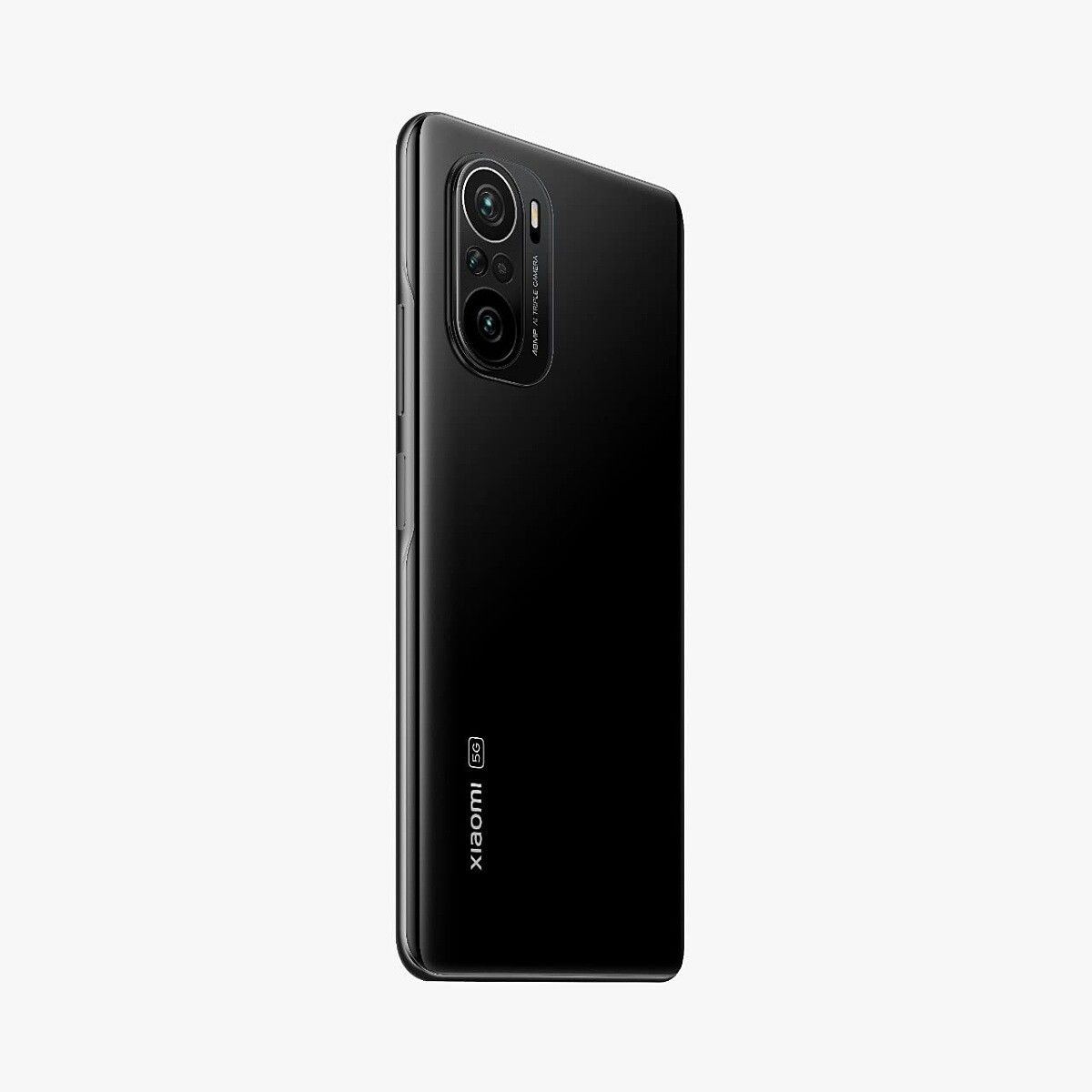
Xiaomi Mi 11X
The Mi 11X is Xiaomi's latest affordable flagship with a Snapdragon 870 SoC, 48MP triple cameras, and an ad-free MIUI experience.
The 8GB + 128GB variant of the Mi 11X Pro is available in India for ₹39,999 (~$535) and the 8GB + 256GB trim for ₹41,999 (~$560). Some of its worthy competitors include:
- the iQOO 7 Legend (India) — which starts the same price and offers a similar performance along with faster charging, in-display fingerprint scanner, metal instead of plastic, but the uncertainty in terms of updates, and
- the OnePlus 9R with faster charging but a slower Snapdragon 870 chipset and an inferior camera.
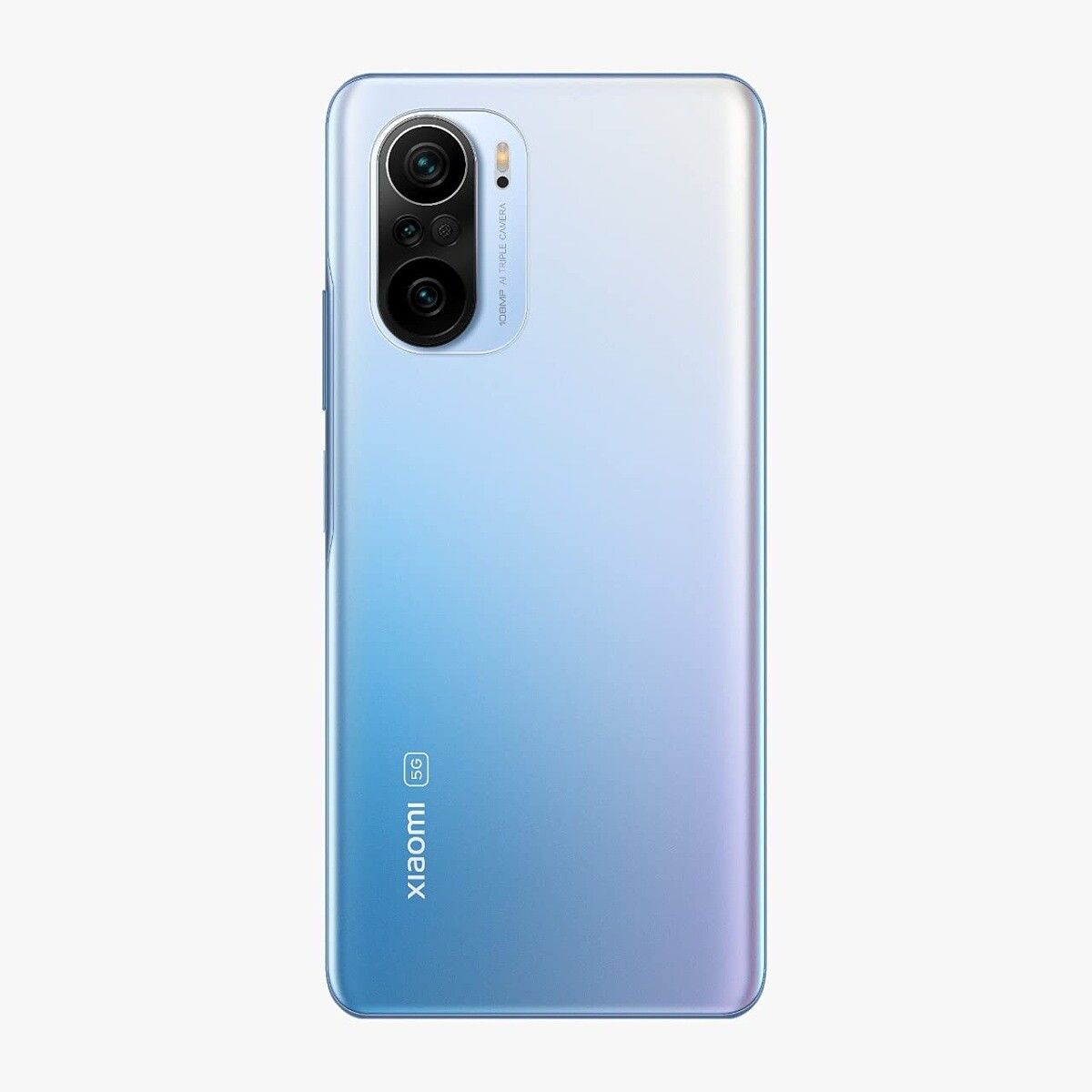
Xiaomi Mi 11X Pro
The Mi 11X Pro is a feature-rich flagship killer with a 120Hz AMOLED display, Snapdragon 888, 108MP cameras, and more.
The most intriguing aspect of the Mi 11X series is that the smartphones are priced nearly ₹10,000 (~$135) below the OnePlus 9R and the OnePlus 9 while offering a similar experience, if not the same. Xiaomi has been snapping at OnePlus' heels since its POCO F1 days. The gap between these two phones is getting so narrow that many existing OnePlus users might switch to Xiaomi to cherish the same features at a much lower price. This is definitely a reason for OnePlus to worry.

